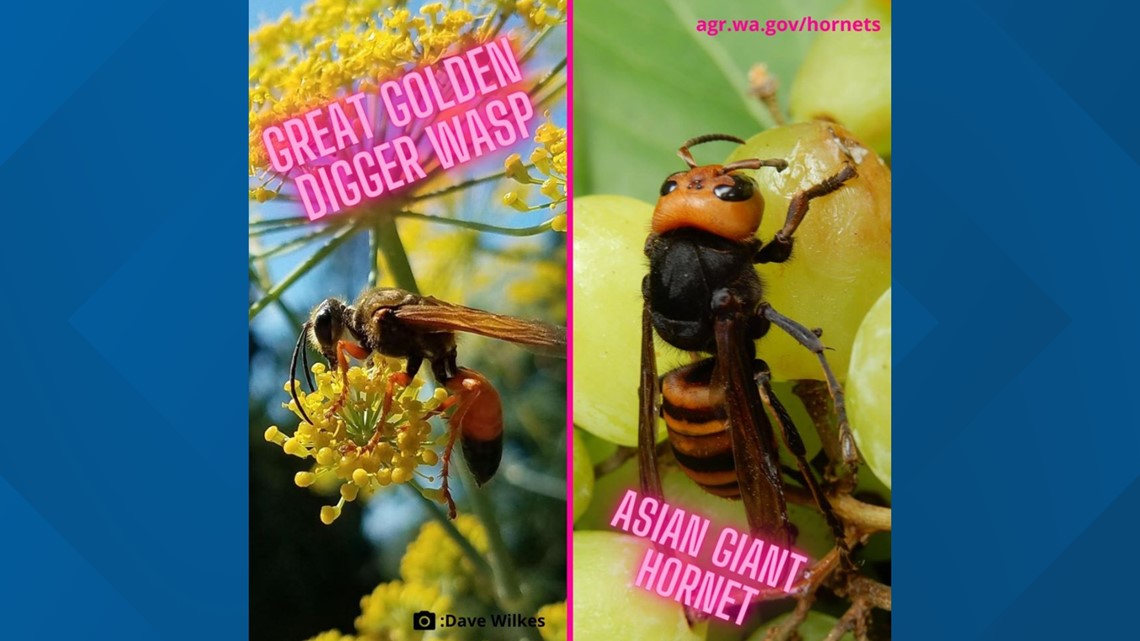Think you spotted an Asian giant hornet in your backyard? Check again.
The Washington State Department of Agriculture launched a campaign Wednesday to educate the public about insects that look similar to the invasive hornet.
More than 2,000 potential sightings of the Asian giant hornet were reported to WSDA over several months. Almost all of them turned out to be false reports.
First up in WSDA’s campaign: The Great Golden Digger Wasp. The state launched the #ThatIsNotAnAsianGiantHornet series after receiving “tons of reports” of this type of this wasp.
RELATED: Could praying mantises kill or control the Asian giant hornet population in Washington state?
The Great Golden Digger Wasp is not aggressive and minds its own business, according to WSDA. You can tell it apart from an Asian giant hornet by the markings on its abdomen. Great Golden Digger Wasps are half orange and half black whereas Asian giant hornets have black and orange or yellow stripes.
If you see a Great Golden Digger Wasp, WSDA urged the public to leave it alone.


Bald-faced hornet, yellow jackets, bumblebees and ten-lined beetles are also often confused with Asian giant hornets, according to WSDA.
Six Asian giant hornets have been found in Washington state, one of which was caught in a trap last month. The other five were found in the environment.
Asian giant hornets attack beehives for protein and can grow up to two inches long, making them easily distinguishable from smaller bees and hornets. Their active season starts in April and runs through early summer/early fall when they become most destructive to honey bee populations.
WSDA hopes to destroy any hornet nests by mid-September or October — before the colony would begin reproducing queens and drones — to prevent the further spread of the invasive hornet.
People who believe they've seen the hornets are asked to contact WSDA. They ask you to exercise extreme caution if you see one — their stingers are longer than native bees and hornets, they can sting repeatedly and their venom is more toxic.

